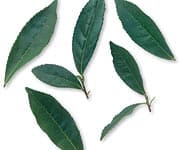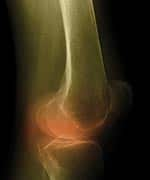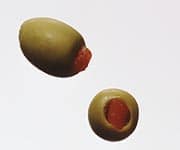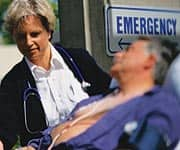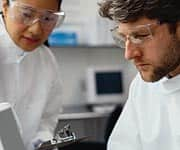Life Extension Magazine®
Progesterone Guards Against Disability Following Brain Injury | |
Administering progesterone to trauma victims following brain injury may reduce their risk of death and degree of disability, according to Emory University researchers.9 To qualify for this phase II clinical trial, prospective participants had to reach the hospital within 11 hours of a moderate to severe blunt traumatic brain injury. Seventy-seven of 100 subjects received intravenous progesterone, while the other 23 received a placebo. After 30 days, neurological function and disability level were rated. Progesterone treatment was associated with a lower mortality rate: 30% of the placebo group died within the 30-day period, compared to only 13% of those given progesterone. Severe traumatic brain injury survivors in both groups had poor 30-day neurological outcomes; however, moderate traumatic brain injury survivors who received progesterone were more likely to have moderate to good functional outcomes and disability ratings compared to those who received placebo. —Dayna Dye | |
Cola Intake May Decrease Bone Density in Women | |
Daily consumption of cola beverages is associated with decreased bone mineral density of the hip in older women, according to just-released findings.10 Researchers examined dietary intake and hip and spine bone mineral density in more than 2,500 men and women in their fifties and sixties. After adjusting for body mass index, height, age, energy intake, physical activity level, smoking, menopausal status, and estrogen use (in women only), and intake of alcohol, caffeine, vitamin D, and calcium, they found that cola intake in women was associated with significantly lower bone mineral density of the hip. Drinking one daily serving of cola decreased a woman’s bone density by 4-5%, while consuming non-cola carbonated beverages had no effect on bone density.10 Phosphoric acid in cola may slowly leach calcium from the bones, decreasing their density.11 —Elizabeth Wagner, ND | |
Sleep Duration, Quality Affect Blood Sugar in Diabetics | |
Sleep deprivation and poor quality of sleep are associated with poorer blood sugar control in people with type II diabetes, say investigators at the University of Chicago.12 Scientists interviewed 161 African-American volunteers with type II diabetes, assessing sleep quality, sleep loss, and long-term blood sugar levels, as measured by hemoglobin A1c (HbA1c) in the blood. Higher HbA1c levels indicate poorer blood sugar control and an increased risk of diabetes complications. Patients were also categorized as being either “without complications” or “with one or more complications” of diabetes. In patients with no complications, higher HbA1c was associated with perceived sleep loss, but no disruption in sleep quality. In those with at least one complication, higher HbA1c levels were associated with poorer sleep quality, but not with sleep loss. Thus, sleep duration and quality are significant predictors of HbA1c levels, a key marker of blood sugar control in diabetics. —Robert Gaston | |
“Prescription for Disaster” Garners Film Prize | |
“Prescription for Disaster,” a collaborative effort between Life Extension and award-winning documentary filmmaker Gary Null, was recently awarded the prize for Best Documentary Feature at the Red Bank (NJ) International Film Festival 2006. An in-depth investigation of how close ties among drug makers, medical researchers, the FDA, and lawmakers influence consumer health care in America, the documentary has previously been honored at film festivals around the world. In April 2006, it won the coveted Platinum Award at the 39th Annual Worldfest-Houston Film Festival. “Prescription for Disaster” is available to Life Extension members for just $12 a copy on DVD or VHS. For more information, please call 1-800-544-4440. Life Extension’s William Faloon, with co-producer and director Manette Loudon and writer, producer, and director Gary Null, PhD, won the coveted Platinum Award for the documentary film Prescription for Disaster at the 39th Annual WorldFest-Houston Film Festival on April 29, 2006. —Matt Sizing | |
Reviving Bacteria May Yield Medical Benefits | |
Scientists have recently unraveled the previously unknown mechanism by which a strain of bacteria is literally able to come back from the dead.13 A resilient microbe known as Deinococcus radiodurans is capable of returning to life after having its DNA fragmented by extreme desiccation or damaging ultraviolet radiation. Unlike higher life forms, the bacterium possesses at least two copies of its genome. When random DNA breaks occur, at least one intact fragment of any given DNA segment will typically “survive” death. The cell then combines undamaged pieces of DNA fragments with new strands synthesized from remaining DNA fragments from the original cell. Once reassembled, the DNA goes to work directing production of proteins necessary for life. Scientists believe that this extraordinary process may one day inform efforts to repair and regenerate human cells. —Dale Kiefer | |
PayPal Founder Pledges $3.5 Million to Anti-Aging Research | |
Peter A. Thiel, co-founder and former CEO of the pioneering online payments system PayPal, has pledged $3.5 million to support anti-aging research to be conducted under the auspices of the Methuselah Foundation, a research organization co-founded and chaired by Dr. Aubrey de Grey.14 Thiel’s donation will fund pilot projects intended to validate the “SENS” approach to combating aging. Proponents of SENS (Strategies for Engineered Negligible Senescence) believe it is possible to mitigate and eventually reverse age-related changes in body composition at the molecular and cellular levels. Dr. de Grey noted, “I have been working with leading biologists and biochemists around the world in identifying promising research projects, and with this generous donation we will go to work straightaway.” —Matt Sizing | |
Turmeric Fights Arthritis, Bone Loss | |
Turmeric, the yellow curry spice that contains curcumin, may help prevent both rheumatoid arthritis and osteoporosis, according to recent findings.15 In animal subjects, researchers administered turmeric root whole extract, turmeric essential oils, or a curcumin-rich turmeric extract either before or after inducing rheumatoid arthritis. Of the three preparations, the curcumin-rich turmeric extract, which is most similar to commercially available turmeric supplements, was most effective in inhibiting the onset of rheumatoid arthritis. The extract blocked a pathway affecting bone breakdown, suggesting that turmeric could help prevent osteoporosis. In addition, the curcumin-rich extract prevented the activation of a transcription factor known as nuclear factor-kappa beta (NF-kB). Activation of NF-kB enhances the production of inflammatory proteins that destroy joint tissue. —Dayna Dye | |
Alcor Conference Charts Future of Medicine | |
| More than 200 of the world’s most forward-thinking minds gathered in Scottsdale, Arizona, last October for the 6th Alcor Conference, “An Inside Look at the Science and Medicine of Tomorrow.” With topics ranging from “Nanomedicine and Medical Nanorobotics” to “Research Towards Whole-Body Suspended Animation,” the featured presentations examined cutting-edge research projects that share the goal of extending the healthy human life span. Arizona state representatives Michele Reagan and Linda Lopez opened the conference with a discussion of the importance of protecting personal health care rights and encouraging innovative medical research. Dr. Robert Freitas, a senior research fellow at the Institute for Molecular Manufacturing in Los Altos, CA, described nanorobots that may one day repair injured and aging human organs and tissues at the cellular level when damaged cells are unable to do so on their own. These nanorobots could be programmed to eliminate microbial and viral infections, cure cancer, repair the human cardiovascular system, mend injured or failed organs, replace chromosomes in cells to reverse the effects of genetic diseases and aging, and revive cryopreserved patients. Dr. Freitas suggested that nanorobots could eventually provide even more advanced regeneration and rejuvenation therapies to help extend the healthy human life span. He believes that nanomedicine eventually will incorporate diagnostic devices in the skin that can monitor key bodily functions and provide critical feedback to anticipate internal health problems. The Life Extension Foundation helps to fund Dr. Freitas’s groundbreaking research. Dr. Gregory Fahy, chief scientific officer of California-based 21st Century Medicine, presented the results of his latest research on the vitrification of kidneys, brains, and whole bodies at extremely low temperatures. Funded by Life Extension, this slow and painstaking investigation into the cryopreservation of major biological systems is leading to the development of organ and tissue banks that will someday save thousands of lives. Dr. Fahy’s pioneering long-term goal is the achievement of perfect suspended animation. Repairing the damage caused by aging was the subject of a presentation by Dr. Aubrey de Grey, a biogerontologist who is the originator of several noted prizes that encourage research to solve the problems of aging. Dr. de Grey outlined his Strategies for Engineered Negligible Senescence (SENS) and discussed potential methods to reverse all forms of aging damage. Websites of Interest: —Philip Smith | |
| References | |
| 1. Huseini HF, Larijani B, Heshmat R, et al. The efficacy of Silybum marianum (L.) Gaertn. (silymarin) in the treatment of type II diabetes: a randomized, double-blind, placebo-controlled, clinical trial. Phytother Res. 2006 Oct 30; [Epub ahead of print]. 2. Unno K, Takabayashi F, Yoshida H, et al. Daily consumption of green tea catechin delays memory regression in aged mice. Biogerontology. 2006 Sep 7. 3. Kaur M, Singh RP, Gu M, Agarwal R, Agarwal C. Grape seed extract inhibits in vitro and in vivo growth of human colorectal carcinoma cells. Clin Cancer Res. 2006 Oct 15;12(20 Pt 1):6194-202. 4. Freund-Levi Y, Eriksdotter-Jonhagen M, Cederholm T, et al. Omega-3 fatty acid treatment in 174 patients with mild to moderate Alzheimer disease: OmegAD study: a randomized double-blind trial. Arch Neurol. 2006 Oct;63(10):1402-8. 5. Flores-Mateo G, Navas-Acien A, Pastor-Barriuso R, Guallar E. Selenium and coronary heart disease: a meta-analysis. Am J Clin Nutr. 2006 Oct;84(4):762-73. 6. Mozaffarian D, Rimm EB. Fish intake, contaminants, and human health: evaluating the risks and the benefits. JAMA. 2006 Oct 18;296(15):1885-99 7. Zhai G, Aviv A, Hunter DJ, et al. Reduction of leucocyte telomere length in radiographic hand osteoarthritis: a population-based study. Ann Rheum Dis. 2006 Nov;65(11):1444-8. 8. Scarmeas N, Stern Y, Mayeux R, Luchsinger JA. Mediterranean Diet, Alzheimer Disease, and Vascular Mediation. Arch Neurol. 2006 Oct 9; [Epub ahead of print]. 9. Wright DW, Kellermann AL, Hertzberg VS, et al. ProTECT: A randomized clinical trial of progesterone for acute traumatic brain injury. Ann Emerg Med. 2006 Sep 28; [Epub ahead of print]. 10. Tucker KL, Morita K, Qiao N, Hannan MT, Cupples LA, Kiel DP. Colas, but not other carbonated beverages, are associated with low bone mineral density in older women: The Framingham Osteoporosis Study. Am J Clin Nutr. 2006 Oct;84(4):936-42. 11. Available at: http://www.healthy.net/scr/article.asp?ID=2061. Accessed October 31, 2006. 12. Knutson KL, Ryden AM, Mander BA, Van Cauter E. Role of sleep duration and quality in the risk and severity of type 2 diabetes mellitus. Arch Intern Med. 2006 Sep 18;166(16):1768-74. 13. Zahradka K, Slade D, Bailone A, et al. Reassembly of shattered chromosomes in Deinococcus radiodurans. Nature. 2006 Oct 5;443(7111):569-73. 14. Available at: http://www.mprize.org/index.php?pagename=newsdetaildisplay&ID=0107. Accessed October 16, 2006. 15. Funk JL, Frye JB, Oyarzo JN, et al. Efficacy and mechanism of action of turmeric supplements in the treatment of experimental arthritis. Arthritis Rheum. 2006 Oct 30;54(11):3452-64. |


